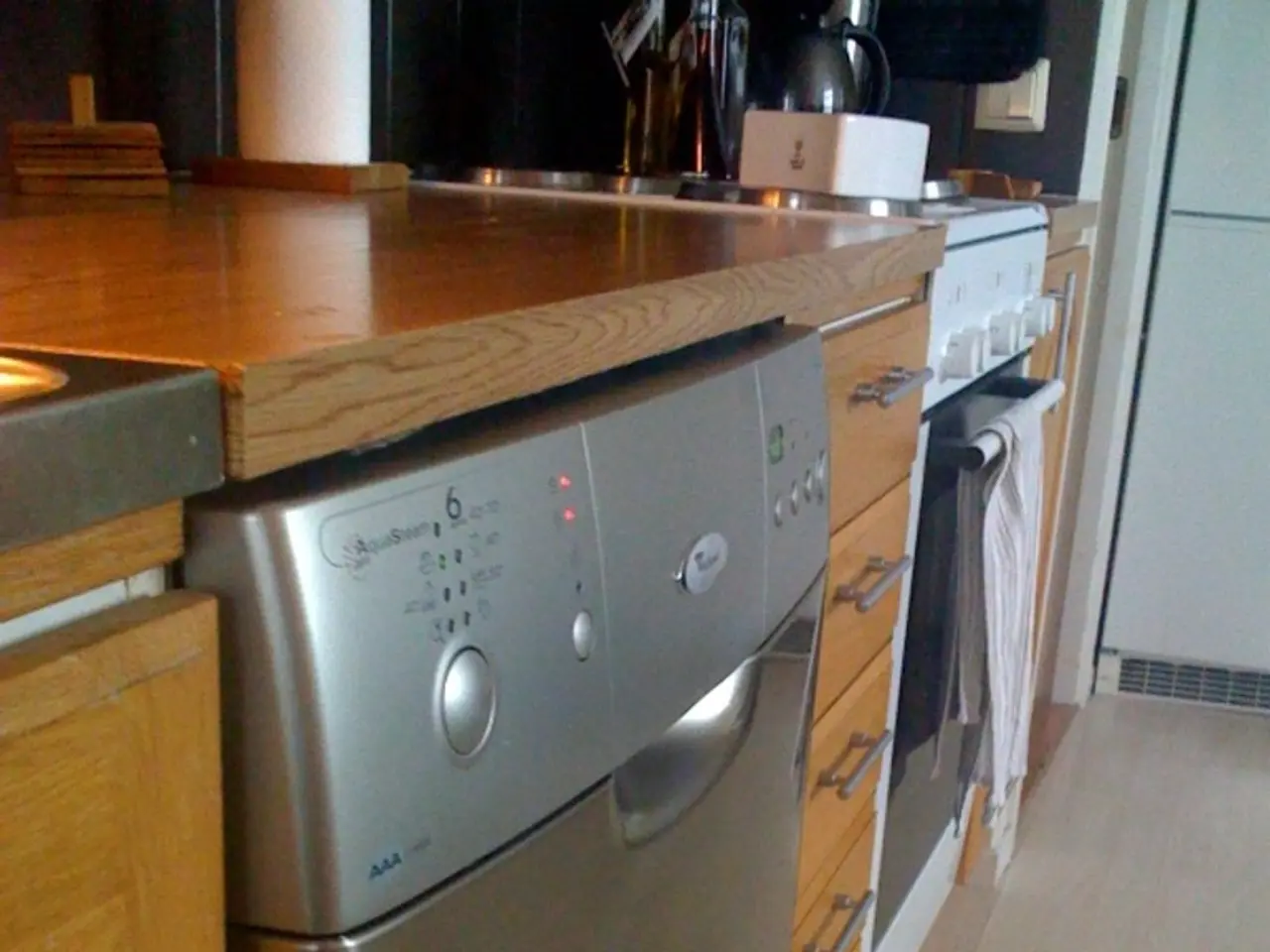Steps for Reducing Energy Consumption of Energy-Greedy Kitchen Appliances
Saving Energy in the Kitchen: A Guide to Energy-Efficient Appliances
In the modern home, kitchen appliances play a crucial role in our daily lives. However, these appliances can also be significant energy consumers, contributing to rising electricity bills and environmental impact. In this article, we will explore energy-efficient kitchen appliances and discuss tips to reduce energy consumption in your kitchen.
Fridges and Freezers
Fridges and freezers are the most energy-hungry appliances in the kitchen, accounting for around 8% of an average home's energy use [3]. The most energy-efficient fridge model in Australia, as of August 2025, is the Hisense 417L Bottom Mount Refrigerator, boasting an 8-star energy rating and an estimated 10-year running cost of $911.73 [1]. Another similarly efficient model is the Haier 433L Bottom Mount Refrigerator, also rated 8 stars and with a 10-year running cost of around $923.65 [1].
It's worth noting that French-door fridges tend to be the least energy-efficient, with 10-year running costs ranging from approximately $1,280 to $2,276 depending on the model [4]. To save energy, it's recommended to limit the number of times a fridge door is opened, keep it stocked, and check and replace faulty seals.
Dishwashers
Dishwashers can be more energy- and water-efficient than washing by hand, but not all models are created equal in terms of energy efficiency. The most energy-hungry dishwasher over 10 years costs $2107, while the least expensive model costs $840 [2]. Using the eco mode function on a dishwasher can save energy and is effective with good-quality detergent.
Ovens
Minimizing the number of times an oven door is opened, only preheating when necessary, and replacing any broken seals that let heat escape can save energy in ovens. The Miele H2861BP wall oven is the least energy-efficient standard 60cm-wide wall oven, with 10-year running costs of $559 [2]. On the other hand, the Haier HWO60S14EPX wall oven is the most energy-efficient standard 60cm-wide wall oven, with 10-year running costs of $410 [2].
Smaller Kitchen Appliances
Smaller kitchen appliances, excluding fridges and dishwashers, generally use less energy than larger ones. Using a toaster instead of a grill, or a kettle instead of boiling water on a ceramic/electric cooktop, can save energy. Air fryers can cook meals in a shorter amount of time than an oven, making them a more energy-efficient choice for quick meals.
Energy-Saving Tips
- Using a plug-in power meter can help determine the energy usage of kitchen appliances.
- Waiting until a dishwasher is full before running it saves on water.
- Setting a fridge's temperature to 3°C and freezer to -18°C increases energy efficiency without compromising food safety.
- Baking or roasting on multiple trays in an oven saves on time and energy.
- A second fridge in the garage can be inefficient due to its age and lack of insulation, and it is suggested to only plug it in when entertaining.
In conclusion, by making informed choices about our kitchen appliances and adopting energy-saving habits, we can significantly reduce our energy consumption and save money on our electricity bills. For more information on energy-efficient appliances and tips to save energy, visit the Australian Government's Energy Rating website.
Table:
| Appliance / Type | Energy Rating | Estimated 10-Year Running Cost (AUD) | Notes | |---------------------------------|---------------|-------------------------------------|----------------------------------------| | Fridge Model / Type | Energy Rating | Estimated 10-Year Running Cost (AUD) | Notes | | Hisense 417L Bottom Mount | 8 stars | $911.73 | Most energy efficient (2025) | | Haier 433L Bottom Mount | 8 stars | $923.65 | Also very efficient | | Typical Fridge (300-500 kWh/yr) | Varies | $800-$1,800 (approximate range) | Depends on size/type/location | | French-door fridges | Lower stars | $1,280 - $2,276 | Least efficient, larger models | | Dishwasher Model | Energy Rating | Estimated 10-Year Running Cost (AUD) | Notes | | Most energy-hungry | Varies | $2107 | | | Least expensive | 3 stars | $840 | | | Oven Model | Energy Rating | Estimated 10-Year Running Cost (AUD) | Notes | | Miele H2861BP wall oven | 2 stars | $559 | Least energy efficient | | Haier HWO60S14EPX wall oven | 7 stars | $410 | Most energy efficient |
These figures are based on Australian government energy rating calculators and electricity rates as of 2025 [1][3][4].
References:
- Australian Government, Department of the Environment and Energy. (2025). Energy Rating Calculator. Retrieved from https://www.energyrating.gov.au/calculators
- Choice. (2025). Dishwashers. Retrieved from https://www.choice.com.au/home-and-garden/appliances/dishwashers
- Australian Government, Department of the Environment and Energy. (2025). Energy Use in the Home. Retrieved from https://www.energy.gov.au/energy-use-home
- Australian Government, Department of the Environment and Energy. (2025). Fridges. Retrieved from https://www.energy.gov.au/energy-use-home/appliances/fridges
- To promote a lifestyle that prioritizes food safety and energy efficiency, consider the choice of energy-efficient home-and-garden appliances, such as energy-efficient fridges, dishwashers, and ovens.
- Be mindful of energy-saving practices in the kitchen, like using smaller kitchen appliances such as air fryers, toasters, and kettles instead of larger appliances, which can contribute to energy efficiency.
- To make informed decisions about appliance purchases and optimize energy efficiency, one can refer to technology like plug-in power meters and the Australian Government's Energy Rating website for detailed information on energy-efficient appliances and energy-saving tips.




